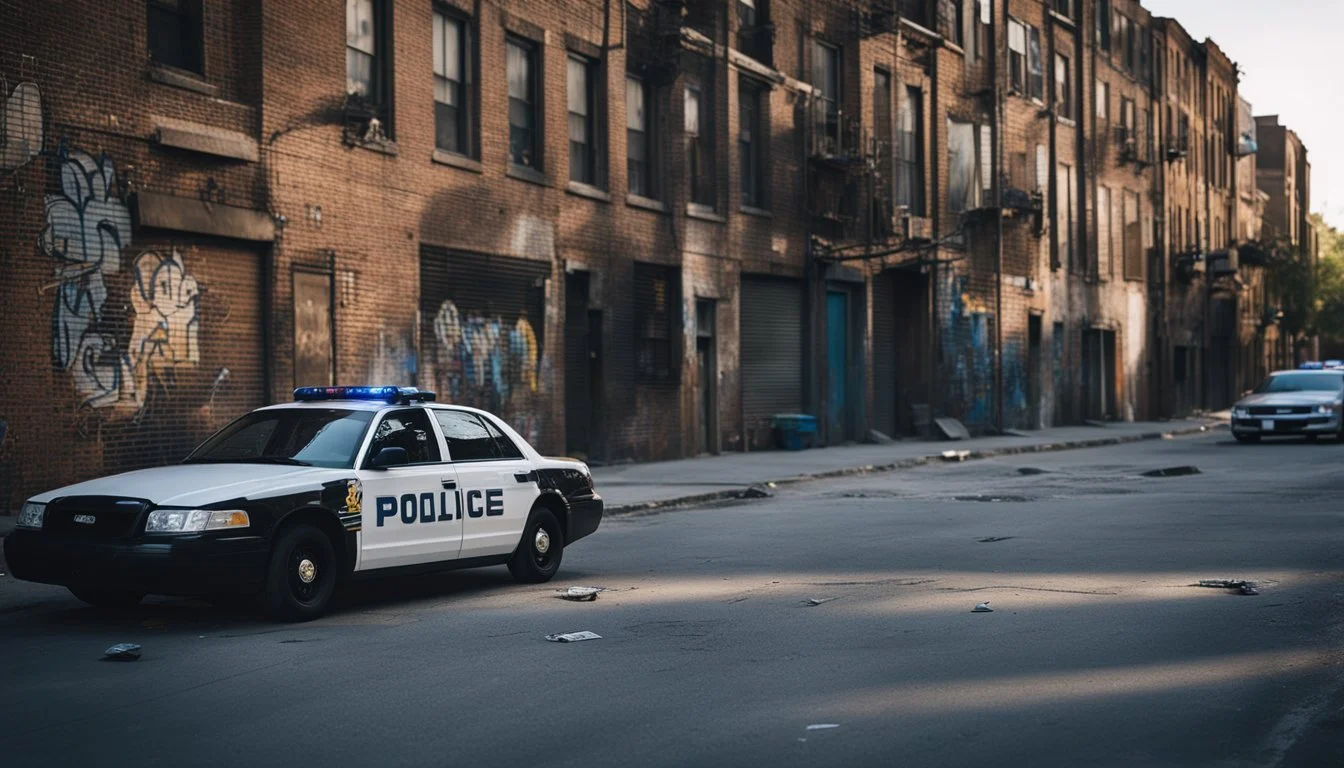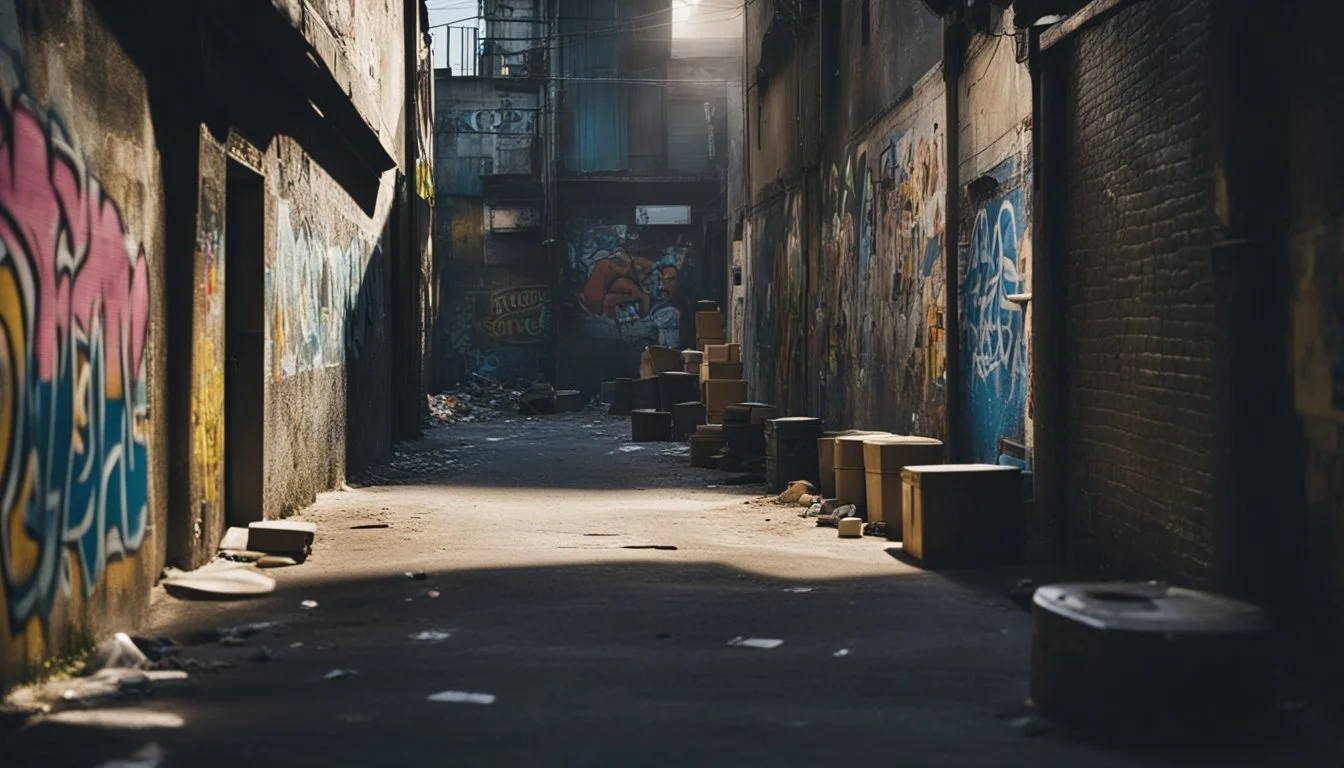9 True Crime Documentaries About Gang Violence in Urban Areas
Must-Watch Choices
In recent years, true crime documentaries focusing on gang violence in urban areas have garnered significant attention for their raw portrayal of life on the streets. These films delve into the intricate dynamics of gang culture, offering viewers an unfiltered look at the harsh realities faced by those living in these environments. They shed light on the socio-economic factors that drive individuals to engage in gang-related activities and the unrelenting violence that often ensues.
This article explores nine compelling true crime documentaries that provide an in-depth examination of gang violence in various urban settings. By highlighting the struggles and stories of real people affected by gang activity, these documentaries aim to foster a deeper understanding of the complexities surrounding this pervasive issue. From the shadowy corners of major cities in the United States to international hotspots, each film captures the unique but often interconnected experiences of gang life.
1) City of Gangs: London
London has been grappling with gang violence for decades. Notably, young black men in the city are disproportionately affected. The situation in the capital is marked by ongoing turf wars and criminal activities.
One impactful documentary on this topic is "Inside London's Gang Violence" (2023). This film provides a raw look at the increasing murder rates among London’s youth. It highlights personal stories and the societal factors contributing to the violence. More information.
Another significant piece is BBC's coverage, "Life in a Gang: 'You Don’t Know Who's Gonna Die Next'" (2021). It explores the aftermath of the 2011 riots and the resulting police tactics to track and mitigate gang crime. More information.
The documentary "The Real Gangs of London" (2020) offers a unique angle by comparing the dramatized version of gangs as depicted in popular media with the reality on the streets. It provides deep insights from individuals who were directly involved. More information.
These documentaries are essential for anyone looking to comprehend the complexities of gang dynamics in London, showcasing both historical and contemporary perspectives.
2) Crips and Bloods: Made in America (2008)
"Crips and Bloods: Made in America" is a documentary by Stacy Peralta that delves into the origins and impact of two of America’s most infamous gangs, the Crips and the Bloods. Set in the heart of Southern California, the film explores the socio-economic conditions that have contributed to the rise and persistence of these gangs over several decades.
The documentary takes a first-person look at the gang members themselves, providing insights directly from the individuals involved in these rivalries. It examines how political, social, and economic factors have driven African-American youth into gang culture as a way of finding identity and protection.
Featuring interviews with law enforcement officials, social activists, and the gang members, the film questions the societal and governmental responses to gang violence. The narrative highlights not only the violence and loss but also the enduring dreams for a better life among those caught up in this cycle.
"Crips and Bloods: Made in America" serves as both a cautionary tale and a message of hope, underscoring the human cost of gang conflict while emphasizing the need for social change. It offers a profound look at the need for community rebuilding and the potential for redemption.
For more information, visit the Wikipedia page.
3) Gangland: The Complete Series
Gangland: The Complete Series (2007) provides an in-depth examination of notorious gangs throughout history. Each episode uncovers the power and influence these groups wielded. By offering detailed narratives and real-life accounts, viewers gain insights into the gang members' daily lives and their impact on communities.
This series features gripping stories about various gangs, including their rise to power and ultimate downfall. From American street gangs to international crime syndicates, it covers a broad spectrum of organized crime.
The show not only delves into the operations of these gangs but also the law enforcement efforts to dismantle them. It paints a vivid picture of the danger and complexity involved in combating gang violence.
Gangland: The Complete Series serves as an educational resource, making it essential viewing for those interested in crime documentaries and the history of gang violence. For more details, visit IMDb.
4) One Murder a Day: Chicago's Violence
Chicago has long struggled with gang violence, resulting in a tragic reality where violence is a part of daily life. This documentary provides a raw look at the overwhelming issue that hits the city's streets.
The film reveals the impact of gang violence on Chicago's communities, centering on the heart-wrenching statistic of one murder occurring every day.
Focusing on personal stories and police responses, the documentary eschews sensationalism for a grounded exploration.
Real footage and interviews with residents, law enforcement, and local activists paint a vivid picture of a city in crisis.
5) The Killing Season: The Highway Murders
"The Killing Season" (2016) is a true crime documentary series that follows documentarians Joshua Zeman and Rachel Mills.
The show investigates the mysterious case of the Long Island serial killer.
This case involves the tragic deaths of ten sex workers whose remains were discovered along Gilgo Beach in Long Island.
Zeman and Mills dive deep into the investigation, uncovering crucial details about the methods and possible motivations of the perpetrator.
Their relentless pursuit of truth reveals the often overlooked biases and systematic issues within the criminal justice system.
Despite the complexity and horror of the case, the series presents a nuanced exploration of the victims' lives and the ongoing impact of their loss.
It draws attention to other unsolved cases and the patterns that may connect them to the Long Island murders.
The documentary provides a gripping and thought-provoking look at a chilling episode in true crime history.
For more information, visit IMDB.
6) Gangsters: America's Most Evil (2012- )
Gangsters: America's Most Evil is a documentary television series that delves into the criminal underworld of the United States.
It profiles some of the most notorious gangsters involved in murder, drug trafficking, racketeering, and human trafficking.
Each episode offers a detailed examination of the rise and fall of these criminals, showcasing how they operated and ultimately met justice.
The series includes interviews with law enforcement officials and experts, providing insights into the complexities of combating organized crime. This makes it an informative watch for those interested in the enforcement challenges and legal battles.
Available for streaming on platforms like Peacock, the series runs multiple seasons, each filled with gripping stories of nefarious activities and the relentless pursuit of justice.
For more information, you can visit IMDb.
7) The Interrupters: Stopping Violence
"The Interrupters" (2011) takes a hard look at urban violence in Chicago. Directed by Steve James and produced by Alex Kotlowitz, this documentary presents the work of CeaseFire, an initiative aimed at preventing violence in the city.
The film follows three "violence interrupters," former gang members who use their street knowledge to mediate conflicts before they escalate. These individuals offer a unique perspective on violence prevention, having lived through similar experiences themselves.
The documentary offers insight into a year marked by intense violence and murder in Chicago. Through personal stories, it sheds light on the community's struggle and the efforts of those working to bring peace to their neighborhoods.
This approach of employing former gang members as peacekeepers is both innovative and controversial. The interrupters' ability to connect with those involved in gang violence sets this documentary apart.
For more information, visit The Interrupters (film) - Wikipedia.
8) Dope: Dealers, Smugglers & E-Rings
"Dope: Dealers, Smugglers & E-Rings" (2017) is a gripping documentary series that delves into the intricate world of the drug trade. It provides a raw and unfiltered look at the production, logistics, sale, and consumption of drugs.
The series takes viewers on a journey through various urban landscapes where the drug trade flourishes. The show's unique perspective comes from its on-the-ground reporting, capturing the harrowing realities faced by dealers and users alike.
One of the standout elements of "Dope" is its comprehensive coverage of law enforcement's battle against drug smuggling and distribution. The series showcases the tireless efforts of police and federal agents as they employ various tactics to intercept drug shipments on land and sea.
Additionally, "Dope" doesn't shy away from highlighting the human toll of addiction. It presents first-hand accounts from individuals whose lives have been irreparably damaged by substance abuse, offering a sobering reflection on the pervasiveness of drug addiction.
For those interested in exploring a multifaceted view of the drug trade, "Dope: Dealers, Smugglers & E-Rings" stands as a significant documentary. It provides a balanced depiction without glorifying the violence and chaos inherent in this underground world.
9) The Latin Kings in America
The Latin Kings are one of the most notorious street gangs in the United States, with a strong presence in urban areas across the country. Originally formed in Chicago in the 1940s, their influence has spread to cities such as New York, Boston, and Los Angeles.
"Latin Kings: A Street Gang Story" (2007) follows Antonio “King Tone” Fernandez, an ex-leader of the gang. Directed by Jon Alpert, this documentary provides an in-depth look at the gang’s activities and their impact on urban communities. It also explores Fernandez’s attempts to reform and guide the gang toward positive paths. Learn more about the film.
The documentary utilizes interviews and real-life footage to highlight the daily challenges faced by members and the communities affected by their actions. This approach sheds light on the complexity of gang life and the reasons behind individuals’ involvement.
For those looking to understand the structure and operations of the Latin Kings, this documentary offers valuable insights. It portrays the stark reality of gang life and the struggles for change within the organization.
Understanding Gang Violence
Gang violence in urban areas is a complex issue shaped by historical, social, and economic factors. It manifests through various activities such as drug trafficking, territorial disputes, and recruitment of young members.
Definition and Characteristics
Gang violence typically involves organized groups engaged in illegal activities, often with a defined hierarchy and territorial claims.
These groups operate in a structured manner, having rules and codes that members must follow. Activities range from drug trafficking and extortion to violent crimes, including assaults and murders.
A key characteristic is the use of violence to assert dominance, protect territory, or resolve conflicts. Recruitment often targets at-risk youth, exploiting their need for belonging and protection.
Historical Context
Gang violence has a long history, evolving from post-war urbanization periods. In many cities, gangs formed in response to social and economic inequalities.
Historical events such as the Great Migration saw African Americans move to urban centers, leading to overcrowded neighborhoods and strained resources. This set the stage for gang formation as a means of social organization and survival.
Over the decades, gangs have adapted to changes in law enforcement tactics, economic conditions, and cultural shifts, maintaining their presence in many urban areas.
Contributing Factors
Several factors contribute to the persistence of gang violence. Economic disparity remains a significant driver, with limited access to education and employment opportunities fostering environments where gangs thrive.
Social factors include family dynamics and community structures that may lack sufficient support systems for youth.
Cultural influences, including media portrayals and local norms, can glamorize gang life or normalize violent behavior. Moreover, the availability of firearms exacerbates the potential for violent confrontations, making disputes deadly.
Understanding these multifaceted causes is crucial in addressing the root problems and implementing effective interventions.
Impact of Gang Violence on Communities
Gang violence profoundly affects urban communities, leading to social disruption, economic despair, and psychological trauma. These impacts are felt deeply by individuals and families, affecting their quality of life and sense of security.
Social Consequences
Gang violence results in a breakdown of community structures and trust. Families often live in fear of becoming victims. Schools in affected areas may suffer from lower attendance and academic performance as students feel unsafe.
Additionally, gang violence can erode the fabric of neighborhoods, weakening social cohesion and making it difficult for residents to work together for community improvement.
Economic Impact
The economic costs of gang violence are staggering. Businesses may be reluctant to operate in high-violence areas, reducing job opportunities for residents. Property values often decline in neighborhoods plagued by gang activity, diminishing homeowners' wealth.
Public resources are heavily strained as law enforcement and healthcare services deal with the aftermath of violent incidents. This diverts funds from other critical community needs.
Psychological Effects
The psychological toll on residents is significant. Witnessing or experiencing gang violence can lead to long-term mental health issues such as PTSD, anxiety, and depression.
Children exposed to violence may have behavioral problems and difficulty concentrating in school. The pervasive environment of fear and trauma can stunt personal and community growth, creating a cycle of despair that is hard to break.



